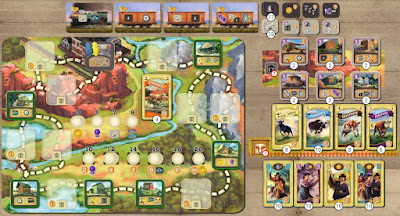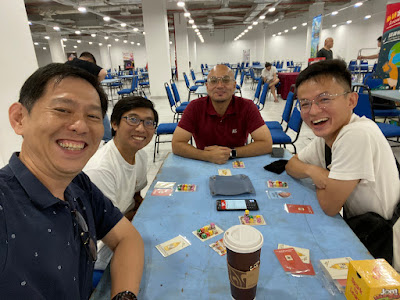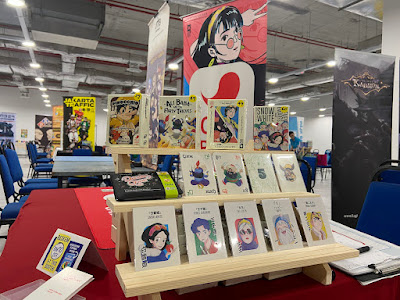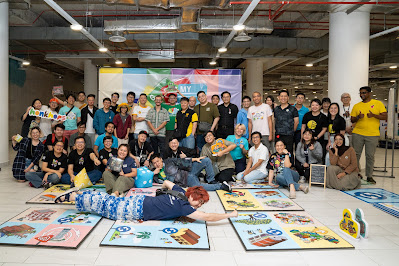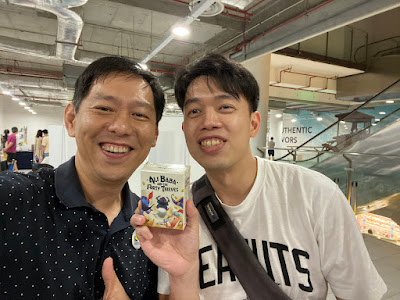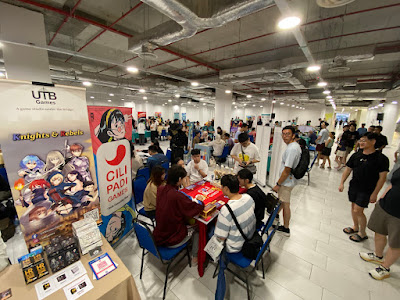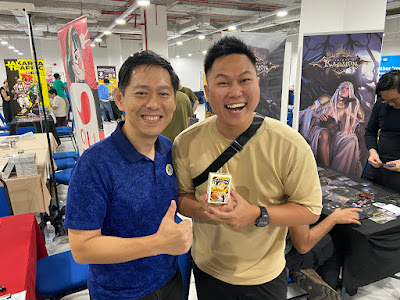Friday, 18 July 2025
Point of View: Circus Island
Wednesday, 16 July 2025
Great Western Trail: El Paso
The Game
Great Western Trail: El Paso is the little brother in the Great Western Trail series. It is a simpler and shorter game, but it retains all the key elements of the original. This is not a children’s game version. This is still a mid-weight strategy game. Think of it as a game for the boss. The boss is busy and does not have time to waste. Get to the point and leave the details to the workers. El Paso gets rid of some details, and focuses on the core messages and decisions required. It is an executive summary of Great Western Trail.
Herding cows in this game translates to manipulating your hand cards to be as valuable as possible. The value of your hand is the card values added up, but only one card per colour is counted. So you want a hand of all different colours. Whenever you arrive at El Paso, you score points or gain benefits based on your herd value. You then discard your hand, and draw a new hand for the next cycle. This part of the game is a deck-building game. There are many ways you can increase your chances of having a high valued herd. You can buy higher valued cattle cards. You can permanently remove low valued cards. Some buildings allow you to sell cards. You get to discard cards to your discard pile and draw new and hopefully better cards. One action allows you to draw and discard. There is also a way to increase your hand size. All these help in improving your herd value.
You will recruit workers. El Paso handles this differently from Great Western Trail. I find it very clever. Workers are now cards, just like cattle. Okay this sounds wrong but I’m talking about game mechanism. Workers are now part of the deck-building mechanism. When you recruit, the worker is placed before you, ready to start work. Once you use a worker, they go to your discard pile. You have to wait for the next reshuffle for them to become available again. Whenever you draw a worker card, you immediately place it before you and draw another card. If you are lucky, after each reshuffle most of your workers are near the top and they all become available again quickly.
There are three types of workers, plus a joker. Not joker as in they don’t do work and only fool around. Joker as in wild - they can do any task required of them. You need workers to buy cattle, buy buildings and use train carriages. The higher valued a cattle card is, the more workers you’ll need, and the more it will cost. The same goes for buildings and train carriages. Train carriages let you gain various benefits, like claiming missions to score points.
Whenever you complete a circuit, you are given an orange cow. This is just an average class cow. Useful in the early game but not at late game. You can’t choose not to take it. It’s something you have to manage. When the orange cow deck runs out, the game enters its last leg. How soon the game ends depends on player actions. If everyone speeds through the circuit, it will be a shorter game.
The Play
El Paso is a strategy game in which you have to do long term planning. You need to keep increasing the value of you herd. You need to recruit employees and use them to get you better stuff. Despite the complexity, on your turn it comes down to just deciding to move between one to three steps. That's a good way to reduce decision paralysis. You only choose between 1 to 3. There may be a lot you want to do, but for now, just think of which one of the three is most relevant. This is almost like a life lesson. Stop worrying about the one hundred possibilities, just choose one thing to do and do it well today.
Every time you complete a circuit, you must place your token on a space to claim a reward. The higher your herd value, the better a position you can use. Generally you can only use each space once, which means you are under pressure to perform better and better, otherwise you may not be able to place your token, which is bad. Being able to outdo yourself every cycle is satisfying. You do small things to keep elevating yourself.
The Thoughts
In the Great Western Trail family of games, El Paso occupies an awkward spot. There are already several heavy weight games. A simpler and shorter version will not be interesting to players who already like the heavy and complex older brothers. These players are not going to mind the complexity and the longer play time. I find that El Paso has all the most important elements that make the original game fun, and it presents them in a cleaner and more succinct manner. You get the same fun with fewer rules and a shorter play time. But then that's me. I doubt I can convince people who like the original to like this. Many fans of the original enjoy its complexities. Removing some of the complexities is fine by me. I am not very attached to the original. I think the publisher decided to create a simplified version of Great Western Trail because they wanted to leverage its popularity to reach out to a new audience. People who are not interested in the original may be tempted to try a simpler and shorter version. If they like it, maybe they can then be enticed to try the original and others in the series. Gosh, I'm making them sound like drug dealers selling gateway drugs.





